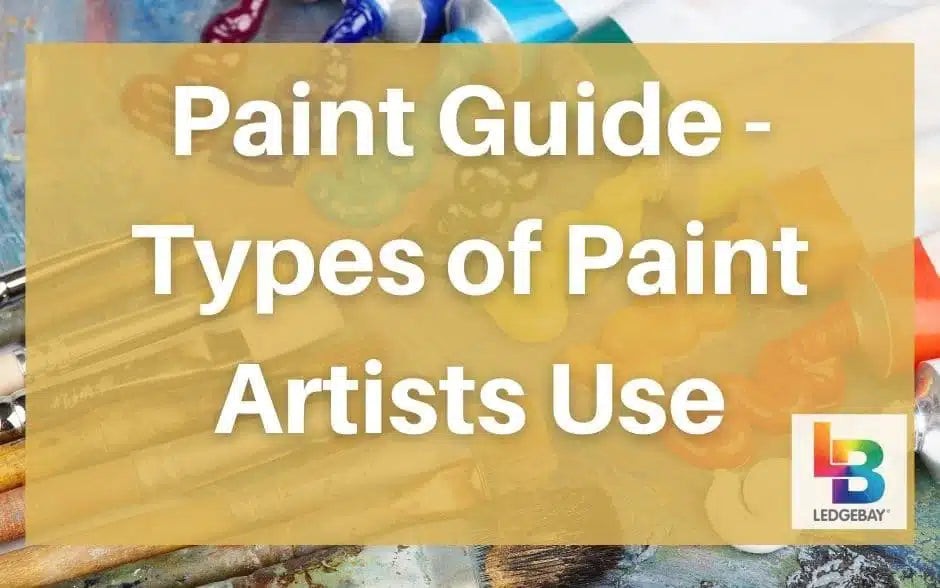Creating abstract art with a paint-by-numbers kit opens up a world of expression without the pressure of starting from a blank canvas. Each numbered section feels like a small puzzle piece that falls into place, eventually revealing your unique vision. Abstract designs are especially fun because they give you some freedom to interpret shapes and colors. But that same freedom can also make it harder to stick to the lines or maintain a clean, crisp look.
Unlike more structured designs, abstract patterns can have bold edges, sharp contrasts, and tight sections that don’t leave much room for messy paintwork. A wobbly brush stroke or paint bleeding over the line can throw off the whole piece. That’s why using the right tools and setting up your space makes a big difference. Clean lines may seem like a small detail, but they can take your art from beginner-looking to polished and gallery-ready.
Choosing The Right Tools And Materials
Starting with the right tools can make your job way easier. While a basic brush might work for large areas, abstract kits usually involve tighter shapes and sharper edges. The better your brush fits the space, the less likely you’ll end up overlapping colors or painting outside the lines.
Here are a few things to keep in mind when picking your tools:
1. Use fine detail brushes. Look for ones with short, firm bristles that keep their shape even when wet. Rounded tips work for curves while flat or angled tips are good for edges.
2. Stick with acrylic paint that offers thick, smooth coverage. Watered-down paint often leaks into nearby sections or looks uneven once it dries.
3. Keep a palette or plate nearby in case you need to thin or mix small amounts of paint. Even in abstract designs, controlled blending should look intentional.
Some paint-by-number kits made with abstract designs in mind may already come with more refined brushes and high-density paint. These can save time and reduce the guesswork, making the painting process less frustrating and more enjoyable.
Preparing Your Workspace
Where and how you paint matters just as much as what tools you use. A cluttered or dim area makes you more likely to miss numbers or go outside the lines without even noticing. Taking a little time to set up your space helps cut down on mistakes, especially with more complex designs.
Try this when setting up your painting station:
1. Pick a well-lit spot. Natural daylight works great. If you're painting at night, use a bright task lamp focused directly on your canvas.
2. Tidy your area. Wipe surfaces, set paints in order, and make sure nothing is sliding around your table.
3. Use masking tape. Lightly tap it along border edges or any tricky section outlines. It helps keep paint in its place and can be peeled away once dry.
4. Sit at a comfortable level. You’ll have better control if your canvas is flat or at a slight tilt instead of being too far below your line of sight.
Keeping a damp cloth nearby is smart too. Accidents happen fast, especially in small sections. A quick swipe can clean up edges before paint sets. For example, if you slip while doing a fine black line and catch the red section next to it, a damp edge of a paper towel can catch the fresh paint before it smudges. It's that kind of simple fix that keeps the overall look clean.
All of this might sound like prep work, but it really helps when you're working with the visual impact of abstract designs. Clean lines and smooth color zones help the full picture come through and keep the final piece looking sharp and expressive.
Techniques For Clean Lines
Getting clean lines takes more than just a good brush or setup. It’s mostly about how you move your hand and manage your paint. Even the steadiest hands can get messy if the paint is too thick, too thin, or still wet from another section. Slowing down and giving yourself a chance to work one area at a time makes a big difference.
Here are a few techniques that help with tight, abstract areas:
1. Practice brush control on a scrap piece of paper before starting. Try short strokes and slow movement to improve accuracy.
2. Use small amounts of paint. Loading up your brush can cause dripping or pooling, which softens edges.
3. Paint slowly near numbered outlines. Pull the color toward the center of the space instead of pushing it out toward the line.
4. Let each area dry before touching anything next to it. If you don’t, you might smudge dried paint without meaning to.
Frequent breaks aren't a bad thing either. Taking your time helps your hand stay steady and your lines stay sharp. Sit up straight and rest your arm on a flat surface, not just your wrist. This gives you more control for those tricky areas, especially when painting corners or layering colors.
One trick that helps many people is painting all sections of one color at a time, especially if those areas are spread out. Just make sure the brush remains clean between shades. In abstract designs, it’s easy to misjudge the edge between two similar shapes. Jumping back and forth between colors without proper drying time makes that worse. Focus on one area, get it right, then move on. Clean lines are about patience more than perfection.
Correcting Mistakes And Touch-Ups
Even with good prep and careful painting, mistakes will sneak in. A small puddle of paint can bleed into the wrong section, or a tired hand might trace outside a line near the end of your session. That doesn’t mean the whole piece is ruined. Light corrections can totally save the look of your painting and keep the final image looking polished.
Try these fixes if something goes off track:
1. Gently blot wet paint with a corner of a damp cloth or paper towel. Press, don’t rub, to keep it from spreading.
2. Let any errors dry completely before painting over them. Painting while it's still wet just blends and muddies the colors more.
3. When covering a mistake, match the original paint’s thickness and stroke direction. Thin layers usually work better than one heavy swipe.
4. If there’s a line that’s gone fuzzy or wide, tighten it with a detail brush and the correct neighboring color on either side. Steady the brush with your pinky for better control.
5. Blend overlapping edges with watered-down paint to help the fix appear seamless, especially in color-shift areas like gradients or outlined shapes.
Some people try using white or background-colored paint to hide issues, but that can dull the artwork if overused. Try to match shades to what's meant to be there rather than brushing over the whole error. For example, if a bold red sneaks into a pale blue shape, don't completely smother it with white just to restart. Masking the red with more of that same pale blue, once dry, will look more natural than a full overwrite.
It also helps to keep track of what paint goes where, especially in abstract layouts where sections might not be obvious at first glance. Scribbling a tiny number in pencil before starting helps with this, and any stray markings can be painted over later.
Making Your Abstract Art Pop
Abstract designs are already eye-catching. But they really pop when you’re thoughtful with color combinations and placement. You're not just painting inside the numbers—you’re guiding the eye and shaping contrast across the whole canvas. Picking bolder shades or carefully leaning into opposing contrasts brings out the art in a way that's clean but full of energy.
Ways to increase visual impact without adding clutter:
1. Choose high-contrast combos. This means putting dark against light or warm against cool, such as teal next to orange or black next to cream.
2. Use sharp edges and color boundaries to draw attention to certain parts of the design. Think about where the focus naturally lands and build from there.
3. Try subtle shading. Even when keeping lines clean, blending small patches of lighter or darker shades within one section adds more depth.
4. Add texture through stroke direction. Vertical lines feel totally different than swirled or diagonal ones, even with the same color.
5. Keep balance in mind. Don’t overload one corner with all the bright colors while the rest fades into the background. Spread the statement areas across the image.
Letting yourself play a little with unexpected combinations can make your piece a conversation starter. For example, if the design features overlapping rectangles, switching opposite corners to reverse color pairs keeps it interesting. It's a small move that gives your painting a one-of-a-kind feel while keeping clean lines front and center.
Keeping Your Art Looking Fresh
Once your abstract painting is done and dry, protecting it helps keep the colors bold and edges sharp over time. Acrylic paint usually holds up well on its own, but sealing it adds an extra layer that keeps dust, sunlight, or accidental smudges from affecting your work.
Start with a clean, dry surface. Gently wipe away any loose paint flakes or dust using a soft cloth. Then apply a clear sealant, either matte or glossy depending on the look you want. Use long strokes, going in one direction to avoid streaks. Let it dry completely, then consider a second layer if the painting hangs in direct light.
If you’re framing, make sure there’s a slight gap between the canvas and the glass. This prevents any sticking or buildup. Shadow box frames work great if your canvas has a little thickness. If you're not framing yet, store the piece flat in a cool, dry place with a sheet of parchment or wax paper over the top to protect the surface.
Paintings make more of an impact when they stay in good shape, so take a little time to store them right. It's also easier to show off your work when you’re confident it won’t get ruined moving it around the house or sharing it with friends.
Building Confidence With Every Abstract Piece
Learning how to get cleaner lines in your paint-by-numbers abstract designs takes practice. Between using the right tools, prepping your space, and trying different techniques, each project helps you build more confidence. Mistakes are part of the ride, but knowing how to fix them makes painting way less frustrating.
As you keep painting, you’ll find what works best for you. Maybe you love sharp edges with high-contrast colors, or maybe you prefer subtle linework and softer transitions. Each canvas adds to your growing skillset and gives you more control over your creative vision. The more time you spend with different abstract designs, the more your finished work will start reflecting your unique style—even within the numbered outlines.
Discover the joy of creating vibrant artworks with Ledgebay's extensive collection of paint-by-numbers abstract kits. Perfect for artists of any skill level, these kits provide everything you need to produce a stunning piece. Whether you're looking to experiment with bold colors or appreciate the subtlety of soft lines, our kits will help you refine your style and capture your creative vision. Explore our options today to find the right match for your next masterpiece.











